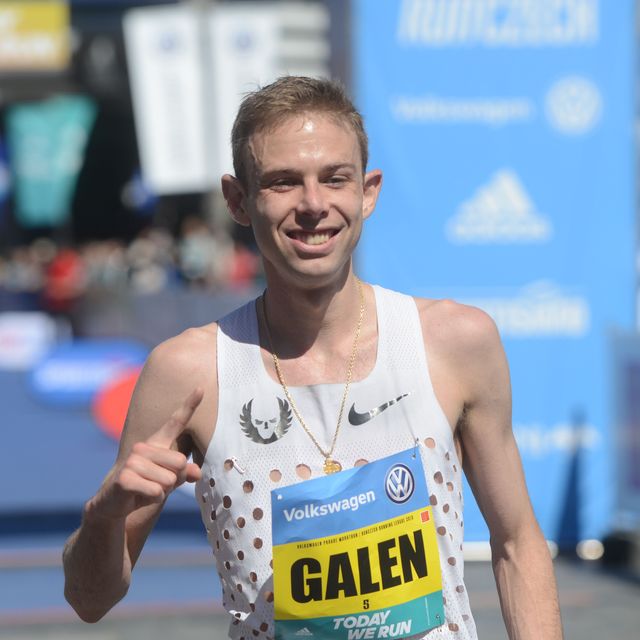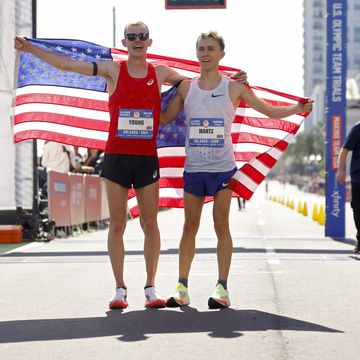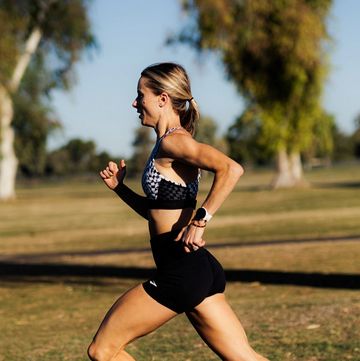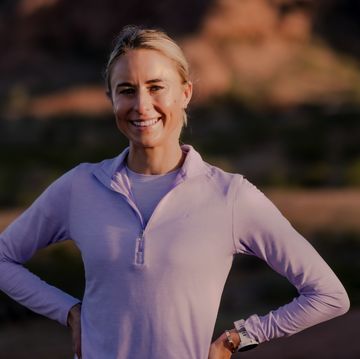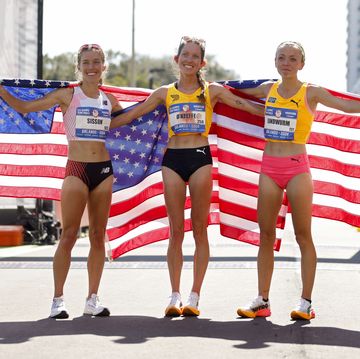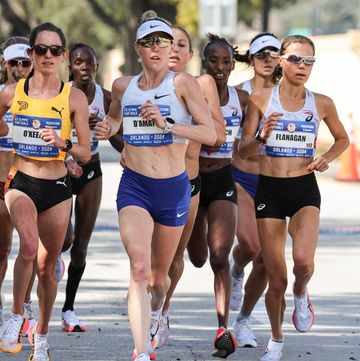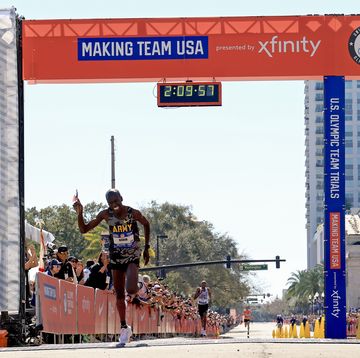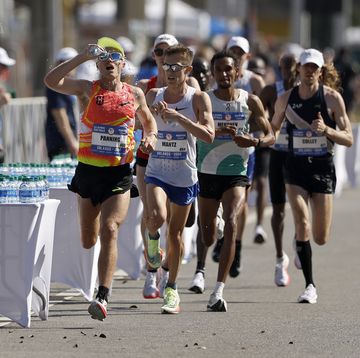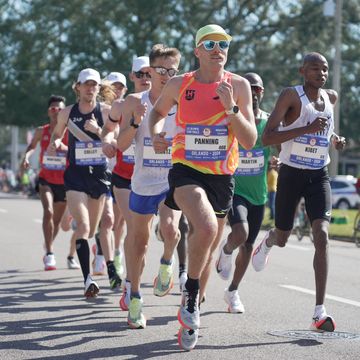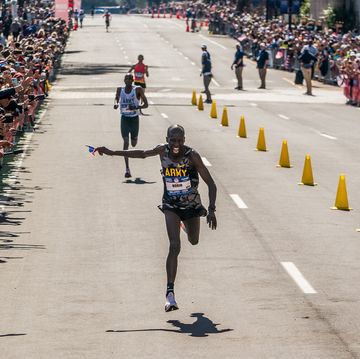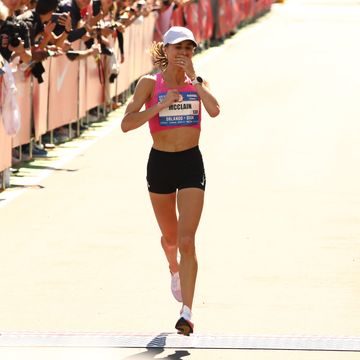Galen Rupp started the 2019 Chicago Marathon under difficult—and unusual—circumstances. He had undergone major surgery a year before to repair a frayed Achilles tendon and a Haglund’s deformity in his left foot, which made training for the race less than ideal.
Then two weeks before the race, Rupp’s longtime coach, Alberto Salazar, was handed a four-year ban from the sport for anti-doping violations. Salazar is in the midst of appealing the ban, but his athletes aren’t allowed to have contact with him as that process unfolds. Within days of the verdict in Salazar’s case, Nike executives decided to shut down the Oregon Project, the training group Salazar headed, which included Rupp.
Rupp ran 23 miles of the Chicago Marathon before dropping out. His agent, Ricky Simms, issued a statement saying Rupp suffered a calf strain during the race and ran through pain from the early miles on.
That day, October 13, was the last public word anyone had of America’s top marathoner—on his health, his training situation, or who was coaching him.
Nearly three months later, on January 9, Mike Smith, the head men’s and women’s track and cross-country coach of Northern Arizona University, confirmed to Runner’s World that he is now coaching Rupp. On January 10, with the Olympic Marathon Trials less than eight weeks away, Rupp spoke to Runner’s World on a phone call that included Simms. Simms requested that the conversation stick to Rupp’s preparations for the Trials and his coaching relationship with Smith.
Rupp indicated that his training is going well, and he’s no longer in any pain from the surgery. “It’s been really nice to not have pain walking around, which I had for a really long time,” he said. “Running is a lot more fun again. It was a long slog. It was not that enjoyable being in pain every step.”
Rupp said he should have listened to his doctor, who told him not to run if he was limping. “I really wanted to run Chicago, and I wasn’t honest with myself about how bad it was,” he said. “I thought I could tough it out for one day.” He couldn’t, and he said he was perhaps “naive” in thinking how quickly he would be able to recover from the surgery.
After the race, he returned to his home in Beaverton, Oregon, and took three weeks completely off from running. He changed up his physical therapy exercises and began his search for a new coach.
Rupp said he spoke to many people, including executives at Nike, who left the decision in his hands. He considered coaching himself, but he felt he needed an objective viewpoint.
“You need someone to be overseeing things and to be giving you guidance and to have someone to bounce ideas off of,” he said. “You get emotional when it’s yourself. It’s easier when it’s someone else, who can look at the the totality of the work, objectively. When it’s you, you have a bad workout, you don’t feel good, it’s easy to get emotional about stuff and overreact, and that’s when you make bad decisions. I need a coach.”
Smith’s name kept coming up, so Rupp called. They communicated over a period of about a month before Smith agreed to take him on.
“I got a really good feeling from him,” Rupp said. “I really enjoyed listening and talking about training with him. I liked his philosophies on a lot of things. He’s not scared to think outside the box and embrace new ideas. He’s looking for inspiration from all different areas—MMA fighters, whatever it is.
“He’s very open-minded in ways to look at training. We talked about what I had done in the past. We had a really good connection. That was something that really struck me about him. I felt really comfortable with him.”
[Build your personalized and adaptive training plan for FREE with Runcoach.]
Rupp said he “wanted someone with a totally fresh perspective and a new set of eyes.” It would have been more convenient to pick someone who was near by in Portland, Oregon—Smith is in Flagstaff, Arizona—but he wanted to choose the person who was the best fit for him.
“I’m not so arrogant or think so highly of everything I was doing,” Rupp said. “I know that there might be things I’m missing or I’m not seeing in training. I really wanted that [outside view]. In talking with him, there’s a lot of similarities [to his previous training], but there were some things I appreciated his honesty: ‘You could be doing this, this, and this differently.’ Sometimes it’s little tweaks. He wasn’t trying to reinvent the wheel. He is fluid and flexible.”
Rupp took a gradual approach to building his mileage and intensity back up after Chicago, and since the end of November, he has been putting in solid, consistent training.
He said he’s had several runs of 20 miles or longer, including one while Smith watched him on the treadmill and frequently adjusted the incline, mimicking the hills of the Trials course in Atlanta. Smith and Rupp communicate frequently by talking and texting, and they’ve met in person on a handful of occasions. For hard workouts, Rupp said Nike coach Tim RowBerry often holds the stopwatch and takes video to send to Smith.
“He’s been awesome about taking the time to explain his rationale about his stuff,” Rupp said of Smith. “That’s one of the things I enjoy, he’s extremely transparent. We’re really open to each other’s ideas.”
Although he does not currently have any races on his calendar, Rupp’s looking at possibilities for a half marathon later this month or early in February. The Trials fall on Leap Day, February 29.
And he expects to be a factor. “God willing,” he would make the Olympic team. It would be his fourth. Rupp won silver in the 10,000 meters in 2012 and took the Olympic bronze in the marathon in 2016.
“I’m in a good spot right now,” he said. “I’m not going to make any guarantees. The Olympic Trials, it’s such a great race, that’s part of the excitement of it, you never know what could happen there. I don’t take that lightly. It’s going to be tough. All I’ll say is I feel really good about the place I’m at right now and where my training is and where it’s headed. I’ll be ready to go and give my best.”

Sarah Lorge Butler is a writer and editor living in Eugene, Oregon, and her stories about the sport, its trends, and fascinating individuals have appeared in Runner’s World since 2005. She is the author of two popular fitness books, Run Your Butt Off! and Walk Your Butt Off!
